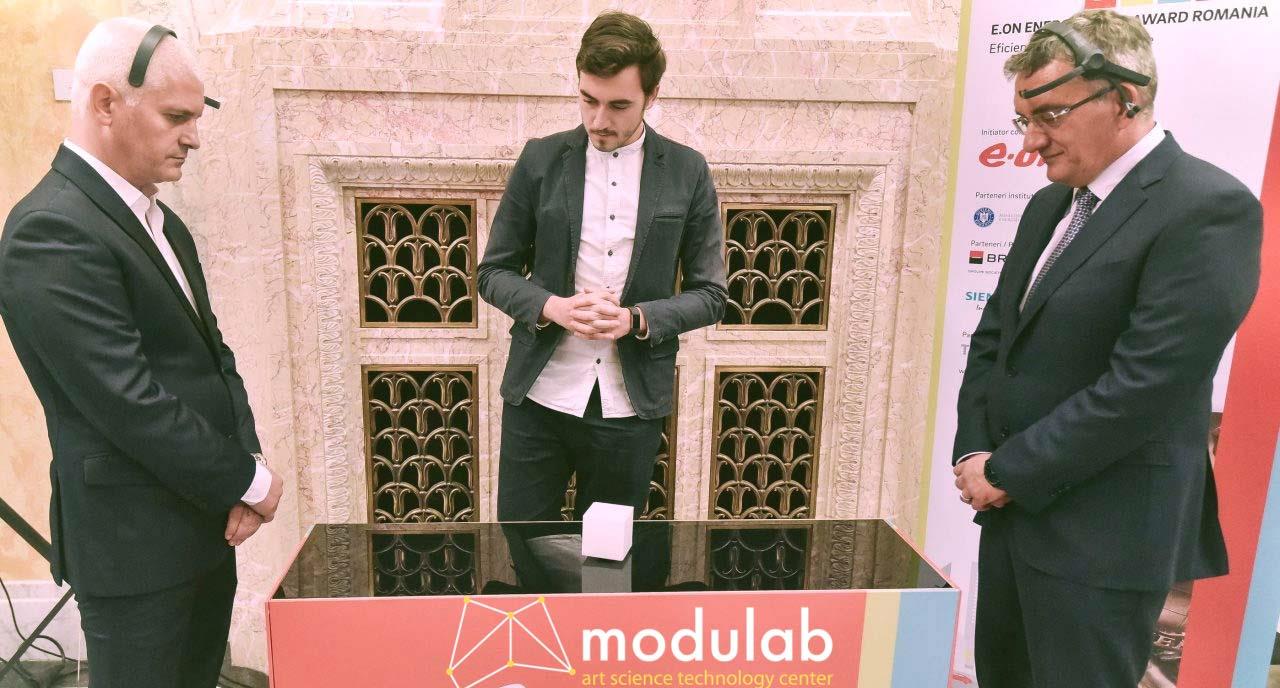Mind battle was a Prototyping project developed while I was working as a Junior Hardware Engineer at Modulab. It was a two-player game controlled at the neuroelectric level by its participants. Using a set of NeuroSky MindWave EEG headsets and a custom-made hardware platform, the neural activity of the players is processed into a back and forth movement of a levitating cube, as each player tries to push the cube towards his opponent. I developed both the hardware and corresponding embedded software while for the product design and idea Modulab is fully credited.
Application Description
The application was designed to retrieve brain wave data from a pair of NeuroSky MindWave EEG headsets (Figure 3) and process it to determine which of the players was more alert and engaged. By quantifying these values, the game pushed with a stepper motor the levitating cube toward the distracted and relaxed player. The game was over for the distracted player when the cube arrived at his end of the table. However, the software application which I had developed using Python was continuously polling and averaging the brainwave values and could easily change the moving direction of the cube.
PCB Assembly
You can observe in Figures 4 and 5 the circuit board that I designed and assembled in my Workspace for this project. The only interface with the game operator (the person in charge to explain the rules of the game to the participants) were three LEDs, one indicating the power and the other two indicating the pairing of headsets with the Bluetooth receivers. If you have in mind the arrangement from Figure 6, by placing the LEDs on the bottom side of the PCB, these were well hidden for the players but also visible to the game operator. Once both of the headsets were paired with the Bluetooth, the game automatically started.
Also included on the circuit board were the two Bluetooth receivers, each with a small Atmel MCU sending the serial data from them to a single-board computer via I2C. Lastly, the Raspberry Pi Zero was processing the data, averaging the quantities, and even filter them in order to determine in which direction to move the levitating cube by commanding the stepper motor driver.
Product Design
Once again I should mention that Modulab is to be credited for the product design of the mind battle game, including the metal and wood frame rendered in Fusion 360 from Figure 7. In the photography from Figure 8, you can also observe the belt drive mechanism moving the magnet levitation stand back and forth according to the commands from the Raspberry Pi Zero microcomputer.
Final Product
The final game mind battle (Figures 9 and 10) participated in many events and had more than 200 matches played only a few months after its development (I retrieved this metric from a logging file from the Raspberry Pi microcomputer). As in the case of e-mailbox and ELI-NP laser miniature, only by carefully writing error handling routines I was able to make this project perfectly work with little or no human intervention.














